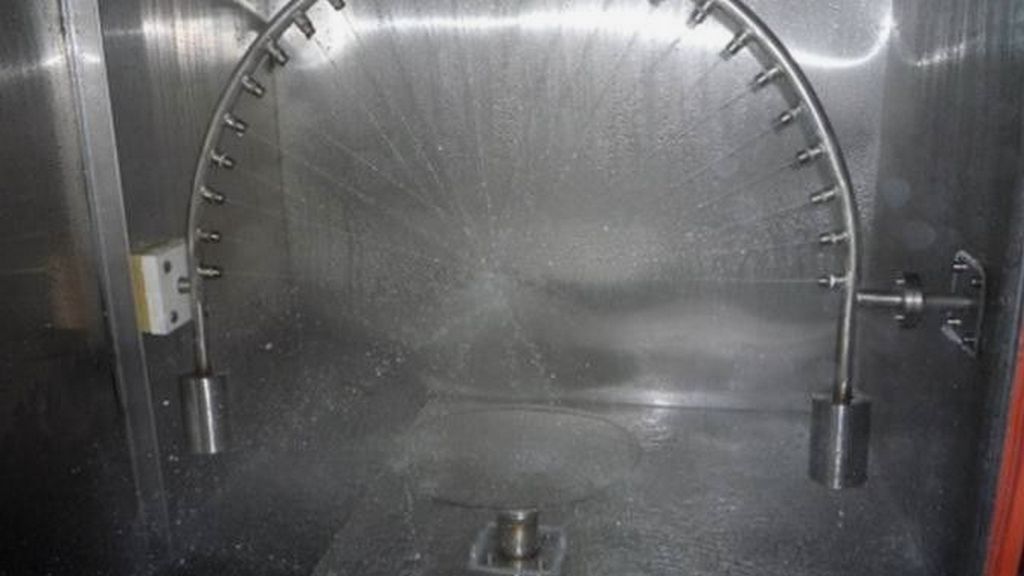
Copyright © 2020 EUROLAB Laboratory Inc. All rights reserved.

The AATCC 35 standard, published by the American Association of Textile Chemists and Colorists (AATCC), provides a test method applied to any textile fabric that is water-resistant or with or without a water-repellent finish. With this test method, the resistance of water to penetrate by impact is measured. The results obtained are used to estimate the probable rain penetration resistance of the fabrics.

The AATCC 35 standard is particularly suitable for measuring the penetration resistance of clothing fabrics. Using a device suitable for this test, the penetration resistance of a single fabric or a fabric combination is tested at different densities of water hammer. The results obtained with the test method described in this standard are based on the wetting of the fibers, yarns and finishes on the fabric, water repellency and the fabric structure.
While testing, a pre-weighed drying Water is sprayed on a test sample backed with paper for 5 minutes under controlled conditions. Then blotter paper is reweighed to determine the amount of leaked water from the sample during testing.
Water repellency is a concept used to describe the properties of both water-resistant and waterproof products after the water-repellent finishing process has been applied. If a product is labeled as water repellent, it means it is hydrophobic or repels water on contact. Water repellency is a characteristic of water resistant and waterproof fabrics, and tests measure how much water pressure a material can withstand before water starts to penetrate. Theoretically, if a water droplet touches the fabric at an angle of less than 90 degrees, the fabric absorbs some water. But if a water droplet hits the fabric at an angle of more than 90 degrees, the fabric absorbs less water. Hence, depending on the angle a liquid strikes the surface of the fabric and how much surface area it covers, how well the water is repelled is determined.
The factors that determine the water resistance of the fabric are: chemical compounds in the fabric, the roughness of the surface area, the pore properties of the fabric, and substances such as oil, sweat and dirt on the surface.
With the experience gained over many years, our organization also provides AATCC 35 Water resistance: rain test services to the demanding enterprises within the framework of laboratory services of the materials with a trained and expert staff.
To get an appointment, to get more detailed information or to request an evaluation, you can ask us to fill in our form and reach you.